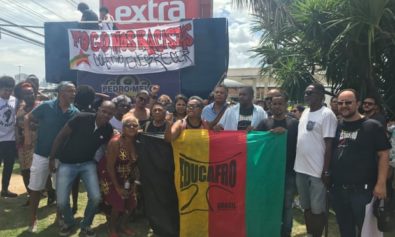Bahia, in Northeastern Brazil, is known for its abundance of Afro-Brazilian rituals which blend elements from Catholicism and Candomblé – a religion with Yoruba origins brought to Brazil by African slaves. One of the most important events in the state’s Afro-religious calendar is the Feast of Good Death (Festa da Boa Morte), which takes place every August in Cachoeira, one of the towns in the region known as Recôncavo Baiano.
The feast is held around August 15, the date when Catholics celebrate the Assumption of Mary. It is organized by Irmandade da Boa Morte (Sisterhood of the Good Death), an organization created in the early 19th century and formed exclusively by mature black women. The founders’ descendants have carried on the feast’s core traditions and worked to maintain their integrity even through the impressive growth of the event’s touristic appeal in the last few years. Read more about Feast of Good Death in 2012.
The Feast of Good Death was listed as Intangible Heritage of Bahia on June 25, 2010 – the anniversary of an 1822 plebiscite in support of Pedro I as Prince of Brazil and an important date in the history of Bahia’s movement for independence from Portugal. The event is actively promoted by Bahiatursa, Bahia’s official tourism organization, especially among African-American tourists, who make up the greatest part of international tourists who visit Cachoeira during the event.
Cachoeira, just like São Félix across the Paraguaçu River and other towns in the Bahian Recôncavo, has its origins tied to sugar and tobacco production, completely dependent on slave work. Cachoeira was particularly prosperous because of its port; the town center still has remarkable 18th- and 19th-century constructions in varying degrees of conservation.
In the age of slavery, Cachoeira’s busy town life allowed a number of women slaves to make money selling food in the streets and buy their freedom. The Sisterhood of Good Death, which started at the Barroquinha Church in Salvador and moved to Cachoeira in the 1820s, had among its missions the purchase of manumission for other slaves.
Honoring the Mother
According to Brazilian anthropologist Raul Lody (in “Abiyamo obirin di oku Mãe. Mulher. Morte”, Festa da Boa Morte, Cadernos CEPAC, 2), “the predominant feeling in the Feast of Good Death is the preservation of the cult of the Mother.” The earthly mother, the Virgin Mary, the Yialorixá (Candomblé pristess), Mawu, the primeval mother in the Yoruba pantheon – all are symbolically present in this complex ritual, whose religious highlights spread over three consecutive days and involve processions…
Read more: Go Brazil


